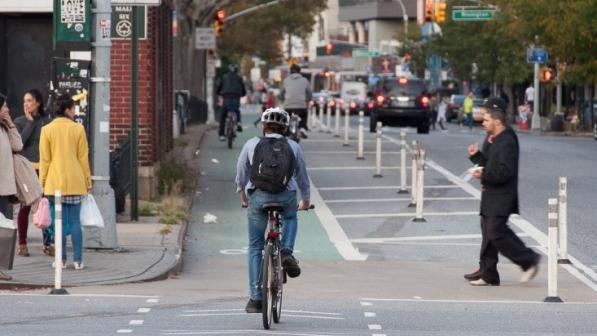Why do we need road casualty targets, and what’s the best kind for cycling?

In 1988, the UK Government set various targets to reduce road casualties. This was a world-leading step at the time, and many other countries followed the UK’s lead.
By the mid-2000s, there was clear evidence that setting targets was itself an effective way to galvanise the necessary political will and resources, at both local and national level, to achieve real progress in reducing the burden of road traffic injuries.
Setting cycling targets and perverse incentives
When it came to cycling (and to some extent walking), however, setting simple casualty reduction targets posed real problems.
Tasked with reducing cyclist casualty in terms of numbers alone, road safety professionals faced a perverse incentive to reduce cycle use (i.e. so that there would be fewer injuries and deaths).
This, despite all the evidence showing how increasing cycle use would provide huge net benefits to public health (not to mention helping to tackle congestion, pollution, greenhouse gas emissions etc.).
This prompted Cycling UK to launch our ‘Safety in Numbers’ campaign in 2009 as soon as the Government started planning to consult on a new road safety strategy.
‘Safety in Numbers’ presented new evidence from Britain, and existing evidence from elsewhere, that more and safer cycling can, and should, go hand-in-hand.
Apart from arguing that any cycle safety measures should seek to reduce danger and fear to achieve this effect, we also called for the kind of targets needed to incentivise it.
A win for rate-based targets
Cycling UK’s campaign for national rate-based targets was a success.
The Department for Transport’s (DfT) consultation document, ‘A Safer Way’ (2009) acknowledged our concerns and, in the eventual Strategic Framework for Road Safety (2011), it adopted indicators to measure the risk of cycling (and indeed pedestrian) serious and fatal injuries per mile travelled, rather than simple casualty numbers.
Commendably, the Cycling and Walking Investment Strategy (CWIS) has kept a rate-based indicator for cycle safety (namely to “reduce the rate of cyclists killed or seriously injured on England’s roads, measured as the number of fatalities and serious injuries per billion miles cycled”), although there is no equivalent rate-based indicator for walking.
Need to exclude cycling and walking from simplistic targets
Yet people walking and cycling - i.e. participating in the very activities that the CWIS wants to increase and normalise - now account for 45% of all fatal and serious casualties on Britain’s roads, up from around 30% ten years ago.
Given this, Cycling UK believes that any wider road safety targets or indicators which seek simply to reduce an absolute number of casualties should exclude walking and cycling. This would avoid even indirectly creating the kind of ‘perverse incentive’ that the Government was rightly concerned about in 2009.
In other words, no casualty reduction targets should apply to cycling and walking unless they are rate-based.












